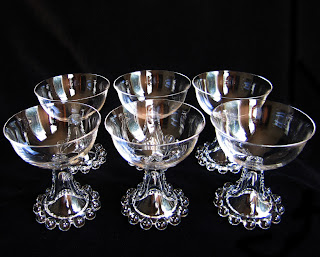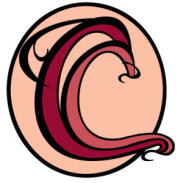Shedding Some Light on Candlewick
Candlewick is one of Imperial Glass Company’s most beautiful
and prolific patterns
The Imperial Glass Company was founded in 1901 in Bellaire,
Ohio by Edward Muhleman, with production beginning in 1904. Candlewick even has
a street named for it in Bellaire.
However like many Elegant Glass companies
Imperial fell on hard times. The company was purchased by Lennox in the 1970’s
and closed forever in 1984.
Candlewick was made from 1936 until 1982 and was
most likely responsible for Imperial Glass Company surviving as long as it did.
 | |
| Anchor Hocking Boopie |
With hundreds of different pieces in 12 colors and numerous
etchings collecting Candlewick can be a lifelong endeavor.
Beware!
There is
a lot of glassware being marketed as Candlewick which is definitely not
Candlewick!
If you want to collect this gorgeous glass there are some
things you need to know.
Candlewick like all Imperial glassware is Elegant glass.
Elegant glass is always at least partially handmade, fire polished, very high
quality glassware with a minimum of flaws.
To learn more about Elegant glass please visit my blog post A Glass Riddle.
 |
| Anchor Hocking Manhattan |
All Candlewick has beads but not all beaded glass is
Candlewick.
This can be a little tricky but
there are some things to watch for.
On plates, shakers, ashtrays and
the like, anything with the beads on a horizontal plane, the beads are always
separated. If the beads are touching the piece is not Imperial Candlewick.
 |
| Imperial Candlewick Stem |
An example of a piece that is often misidentified as Candlewick is Boopie by Anchor Hocking.
Note that in the photo of the Boopie the beads are touching one another whereas in the photo of the Candlewick they are not. This tip is actually more helpful determining what’s not Candlewick that what is - there are non-Candlewick patterns that also have the beads separated.
On pieces where the beading is
vertical such as stems on glasses the beads will be touching one another due to
the constraints put on glass makers by gravity, but there will be a wafer
separating the beaded stem from the bowl and another separating them from the
foot.
Rims on Candlewick are smooth and
do not have a “safe edge” - that little bump on the rim of machine made
glasses. You probably have glasses with a safe edge in your kitchen cabinets.
 | |
| Safe Edge |
As with all rules there are some
exceptions – for details about what those are please visit http://www.awantiques.com/cancol1.htm
for an excellent article.
The best way to be sure you are not being fooled is to
handle the real thing and familiarize yourself with the weight and clarity of
this lovely glass. Until you are confident that you can tell the difference play
it safe and purchase your glass from a dealer that specializes in glassware but
even then do your homework.
Happy hunting!




1 comment:
Post a Comment